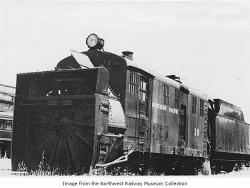In 1850, E. W. Quincy of Illinois patented an open-roll ear-snapping mechanism. A series of innovations led to corn heads for combines. Harvesting corn with corn pickers using open rolls on corn pickers after 1925 proved to be dangerous as farmers often needed to clear stalks from the rolls. In 1885, E. M. Aiken, Dawson, ND, patented shielded snapping rolls with flat plates above the rolls. C. K Shedd and E. V. Collins, Ames, IA, patented a more aggressive shielded snapping device in 1941 which was later used on sweet corn pickers.
1880s
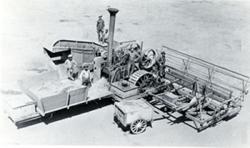
George Stockton Berry (1847-1917) of Lindsay, Tulare County, California designed, built, and in 1886, operated the first self-propelled combine. He was granted a U.S. Patent (# 374,339) in1887. The Berry design embodied the following "firsts":
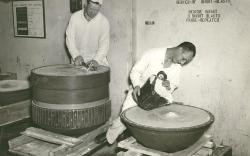
Built in 1880 as the Piccatinny Powder Depot, this site was the major supplier of smokeless powder to the military for many years.

The oldest surviving rotary snowplow in the world
M
By the 1870s, much of shoe manufacturing was performed by machine. One intricate operation continued to defy mechanization: lasting, or fastening the upper part of a shoe to the inner sole. Shoes took on their final appearance while being shaped by hand over a wooden model of a foot called a last, and much manipulation was required to accurately form the leather around the last, especially at the heel and toe.
Innovations
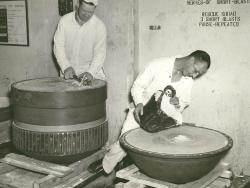
Built in 1880 as the Piccatinny Powder Depot, this site was the major supplier of smokeless powder to the military for many years. Since World War II, Picatinny Arsenal has been at the forefront of research, design, and development of a wide variety of advanced munitions for ground, airborne and…
Read More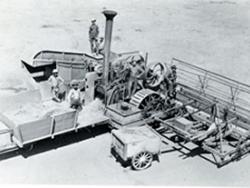
George Stockton Berry (1847-1917) of Lindsay, Tulare County, California designed, built, and in 1886, operated the first self-propelled combine. He was granted a U.S. Patent (# 374,339) in1887. The Berry design embodied the following "firsts":
1. Self-propelled combine.
2. Combine…
In 1850, E. W. Quincy of Illinois patented an open-roll ear-snapping mechanism. A series of innovations led to corn heads for combines. Harvesting corn with corn pickers using open rolls on corn pickers after 1925 proved to be dangerous as farmers often needed to clear stalks from the…
Read More

